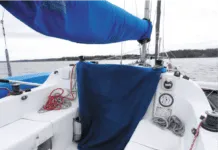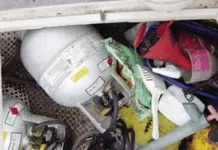
Weather routing requires the vessel’s polars, or at least a generic polar that is close to yours. The version of the 4D program we tested had four polars pre-loaded, including a First 31.7, X37, and a Hanse 495. We attempted to load different versions of the polar for my Tartan 33 and had errors. Because 4D does not include a polar editing feature, we could not adapt one of their polars for our test boat.
LG uses a different approach. From the initial drop-down menu, one selects the “Routing” option. This brings a sub-menu where you define a vessel. We added our boat, then I went to the “Sailing Polars” menu where we imported the same file that was rejected by 4D. Had we not wanted to import the polar, or if we did not have a polar,we could have gone to the “Sailing Polar Diagram Catalog” option. The LG polar catalog lists about 100 different vessels.
Motoring polar
LG also offers a “Motoring Polar” menu. For those not familiar with the concept of a motoring polar, every boat operates differently under power. Also, when hopping across the bay, you may run at 2300 RPM, but on a crossing you would run at 1800 RPM to save fuel.
The user enters into an input screen the following information, calm air boat speed, boat speed with 25 knots and true wind angle (TWA) of 0, 90, and 180 degrees, and boat speed with winds 35 knots and TWA of 0, 90, and 180 degrees. This importance of this feature was made clear in our sea trial of the product.

Neither LG nor 4D track GPH, or cumulative fuel consumption. The ability to compare that to allotted tankage, would be a great planning tool. For example, if the model forecasts 80 hours of motoring and, based on user input, the vessel burns 0.75 GPH and the tankage is 60 gallons, then you know that either additional fuel is needed for a safety cushion, or you will need to sail slowly.

































